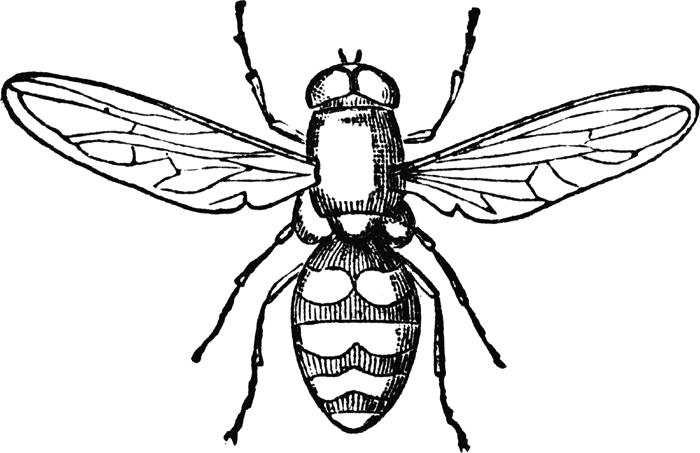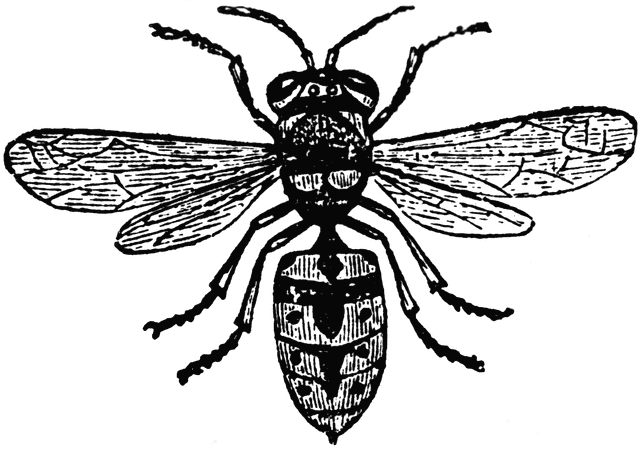Is it a Bee, Wasp or Fly?

Kim Fellows
One important consideration in bee identification is to be aware of tricksters! Some wasps and flies are commonly misidentified as bees, and some even deliberately mimic bees, as a defense against predators. Watch for the following distinguishing features (keep in mind that the main three body parts of an insect’s body, in order, are the head, the thorax and the abdomen):
 Bees generally have hourglass-shaped bodies with a narrower waist between a cylindrical thorax and abdomen. Bees usually have more hair (look fuzzy) and are fatter than wasps and flies.
Bees generally have hourglass-shaped bodies with a narrower waist between a cylindrical thorax and abdomen. Bees usually have more hair (look fuzzy) and are fatter than wasps and flies.
Bees have two sets of wings (4 wings in total) although this can be difficult to distinguish, and they often – but not always – fold their wings along their backs when resting.
Bees are vegetarian and only interested in floral products (pollen and nectar), so you will not find them joining your picnics.
The fuzzy face of a bee usually features long oval eyes along its side.
Long antennae are typical on bees.
Bees’ legs are usually hidden when flying.
Bees carry pollen loads on their back legs or underbelly.
 Flies tend to have stout bodies with less obvious waists than bees and wasps. Flies can have hairs but they’re not fuzzy.
Flies tend to have stout bodies with less obvious waists than bees and wasps. Flies can have hairs but they’re not fuzzy.
Flies have just one set of wings (2 wings in total) that are generally – but not always – visible at their sides when they are resting.
Flies are carnivorous, which is why they might enjoy sharing your food!
Most of a fly’s face is composed of its large round, forward-facing eyes.
Flies have short thick antennae that are often difficult for us to see.
Flies do not purposely transport loads of pollen, although you may notice particles sticking to their bodies.
 Wasps have long slim bodies with a distinctly narrow waist, and are mostly hairless.
Wasps have long slim bodies with a distinctly narrow waist, and are mostly hairless.
Like bees, they have two sets of wings (4 wings in total).
Like flies, they are carnivorous, so they will invite themselves to your picnic.
Wasps have smooth shiny faces that may have shiny or metallic hairs.
Wasps’ long thin legs usually hang down when they are flying.
Wasps do not purposely transport loads of pollen, although you may notice particles sticking to their bodies.
If you are interested in learning more about the differences between these insect groups, visit Bee Spotter. And if you are interested in identifying bees, consider joining Bumble Bee Watch. Bumble bees are a good place to begin distinguishing various bee species, as most are relatively large. Other helpful resources are Bumble Bees of the Eastern United States, Bumble Bees of the Western United States and Bumble Bees of North America. Finally, you may want to check out The Bees in Your Backyard or books by Heather Holm.
**
Kim Fellows is Pollination Canada’s outreach coordinator.
Photo: Mining Bee.
Not yet a member?
An annual membership to Seeds of Diversity gives you access to our seed exchange, seed grow-out programs, and our online news.

We depend on donations to do our work.

Thank you for your support!
